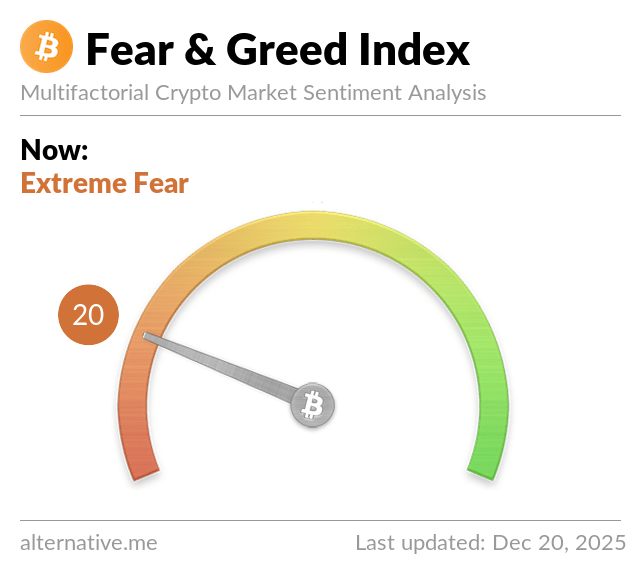The ups and downs of the crypto market often trigger high emotions and knee-jerk reactions among traders and investors. The Crypto Fear and Greed Index today is a great tool that could help you navigate market turbulence with ease.
The index is essentially a metric that gauges the mood prevailing in the cryptocurrency market. Traders, investors, and analysts can benefit by using it because it indicates whether the market actors are more inclined to react with fear or greed. You can use the information it provides to devise better crypto trading strategies.
How do fear and greed affect the decisions of investors?
Greed is often triggered by the fear of missing out (FOMO). A single scroll on social media can make an investor believe that everyone is buying or selling a particular asset. The fear of missing out on a potentially great investment opportunity could drive an individual to invest without conducting in-depth research or take other poor decisions, such as selling prematurely.
Humans have a natural fear of being on the losing side, and when there’s money involved, this fear can go through the roof. Witnessing a slight dip in the market, for instance, might tempt novices to dump at whatever price, even at the cost of substantial loss.
How does the Fear and Greed Index work?

In the context of crypto, fear means the market is bearish. In a fear-driven market, investors are worried about falling performance. Professional traders see extreme fear as a sign that most people are selling their crypto assets, which can also be an opportunity for buying low. Greed, on the other hand, indicates that the market is bullish and the value of crypto is peaking steadily. Pro crypto traders interpret extreme greed as a signal that the market might soon be due for a correction.
The Crypto Fear and Greed chart gauges market sentiments on a scale of 0 to 100. Zero denotes extreme fear, and 100 indicates extreme greed. The index takes various things into account while assigning the market a ranking between 0 and 100. Some of the things it takes on board are discussed below.
1. Bitcoin’s dominance
Dominance examines the position of Bitcoin in the market. If the world’s largest crypto by market cap is receiving all the attention, that’s a sign of the markets being fearful. On the other hand, if Bitcoin is not the dominant crypto and people are investing in alternative coins (altcoins), the market is believed to be more approachable.
2. Market momentum
The metric considers Bitcoin’s trading volume and momentum against 30- and 90-day averages. The logic is that if Bitcoin is experiencing high trading volumes and momentum, it signals fear, which, in turn, leads traders and investors to play it safe.
3. Social media
Social media sites are where the crypto fanbase usually congregates. The index filters and provides analysis that helps traders and investors decide on crypto moves.
4. Surveys
The companies that compile the index also conduct a market-wide survey involving 2,000–3,000 participants. The survey gauges sentiments by assigning higher scores to enthusiastic responses.
5. Trends
This factor keeps track of Google trends. It checks how often people search for crypto-related information. Rising levels of such searches reflect high greed.
6. Volatility
Here, volatility and drawdowns (declines in value) of cryptocurrencies are compared. The value is compared to standard 30- and 90-day volatility and drawdown numbers. When the volatility is high, the outcome signals fear in the crypto market.
Benefits of using the Fear and Greed Index
The Fear and Greed Index might be of help to active traders since it’s a reliable indicator of market trends.
With the index, investors no longer need to act without direction or wade through mountains of research every time they need to make a move.
Using the Fear and Greed Index, you can understand when the market sentiments are highly fearful, when it’s neutral, or when there’s extreme greed. An intelligent investor might choose to sell to avoid losses when fear is high, double their stakes when people are greedy, and be wary when it gets extreme.
You may also use the index to decide when to move against market trends. This strategy can work in the volatile crypto market by capitalizing on trends that other traders are too afraid to attempt.
Criticisms of the Fear and Greed Index
The index may lead to traders trading in and out more frequently than is necessary. Fans of the buy-and-hold strategy believe that this is the best way to gain revenue since the value always bounces back after short periods of decline. Yet, even advocates of this school of thought can’t deny that crypto markets operate on emotions and reactionary trends that change periodically.
Another drawback of the index is that it’s not useful for long-term analysis. Only certain types of traders, such as swing traders, can fully exploit the index. Since there are varying levels of fear and greed during bull or bear runs, a swing trader can make sizeable gains in such periods, but not someone choosing to trade in the long term.
Is the Fear and Greed Index reliable?
Financial experts advise against relying on the index alone. It’s not an all-in-one solution that predicts future market movements accurately. A balanced approach that also takes into account tools such as technical and fundamental analysis can help crypto traders take better decisions.
It’s good to remember that no single event or trend is permanent in crypto trading; everything is subject to change. To sum up, an overall understanding of market trends and good research can add more value to your trading decisions than anything else.
How do you overcome fear and greed in trading?
While fear and greed are natural impulses that drive most of our decisions in life, you have to control them as a trader. To manage greed and fear like a professional trader, you will need to:
- Have a trading plan. Once you have decided how you want to trade and how often, irregular patterns won’t sway you.
- Lower your trading size. Fear and greed come into play when you’ve staked massive amounts that expose you to high risks. Keeping your stakes balanced can help you remain rational.
- Record what you’ve learned. As a trader, you need to keep records of your decisions and outcomes. Such data can help you correct decisions that don’t work.
- Learn and research. Don’t neglect the analysis of experts. Avoid making costly decisions by learning from those who tackled them earlier.
How the Crypto Fear & Greed Index is Calculated
The index is derived from five key factors that are weighted based on their impact on market sentiment:
1. Volatility (25%)
Volatility refers to the extent of price fluctuations in the market. When prices drop significantly, it often signals fear, and when prices rise rapidly, it typically indicates greed. A sudden surge or crash in prices can cause the index to shift dramatically, reflecting heightened fear or greed.
2. Market Momentum and Volume (25%)
This factor measures the trading volume and momentum of major cryptocurrencies like Bitcoin and Ethereum. Higher volume and sustained upward momentum usually reflect investor optimism and a state of greed, while low volume and stagnant prices suggest fear or uncertainty.
3. Social Media Sentiment (15%)
Social media platforms, including Twitter, Reddit, and other crypto-related forums, provide a real-time snapshot of what people are saying about the market. Positive discussions and bullish predictions often contribute to a sense of greed, while negative sentiment points toward fear.
4. Surveys (15%)
Certain crypto platforms and analysts run periodic surveys to gauge the sentiment of crypto investors. These surveys ask investors to reflect on the market outlook and their feelings about future price movements. The results are then incorporated into the index, giving a clearer picture of how investors are feeling.
5. Dominance (10%)
Bitcoin dominance refers to Bitcoin’s share of the total cryptocurrency market capitalization. When Bitcoin’s dominance is high, it often indicates a more cautious, conservative market sentiment, which could lean toward fear. Conversely, when altcoins gain market share, it may signal a more speculative and greedy sentiment.
Read More: Crypto Coin Market
How to Use the Crypto Fear & Greed Index in Your Trading Strategy
The Crypto Fear & Greed Index can be a valuable tool for traders and investors, but it should not be used in isolation. Here’s how you can integrate it into your trading strategy:
1. Identifying Buying and Selling Opportunities
- Extreme Fear (0-24): When the index shows extreme fear, it often suggests that market participants are overly cautious, possibly due to short-term price drops. This can create a buying opportunity for long-term investors looking to purchase assets at a discount. In these situations, prices may be lower than their true value due to panic selling.
- Extreme Greed (75-100): Conversely, when the index is in the greed zone, it could signal that the market is overvalued, and investors might be making irrational decisions based on hype and optimism. This could be a signal to sell or take profits, as the market may be due for a correction.
2. Spotting Market Cycles
The Fear & Greed Index can help you spot the beginning and end of market cycles. Extreme fear typically marks the bottom of a market cycle, while extreme greed often occurs near the top. Tracking the movement of the index over time can help you understand where the market may be in its cycle and adjust your strategy accordingly.
3. Risk Management
By keeping an eye on the Crypto Fear & Greed Index, you can make more informed decisions about risk management. If the index shows extreme fear, it may be a good time to enter the market cautiously, while extreme greed could signal that you should tighten your stop-losses or be more conservative with your trades.
Limitations of the Crypto Fear & Greed Index
While the Crypto Fear & Greed Index is a helpful tool, it has its limitations:
- Short-Term Indicator: The index reflects current sentiment but may not always predict long-term trends. Fear or greed may cause short-term price movements, but the underlying fundamentals of the crypto market often drive long-term growth.
- Subjective Sentiment: Social media sentiment and surveys can be subjective and may not always represent the views of the broader market.
- External Factors: Events such as regulatory announcements, security breaches, or macroeconomic conditions can significantly influence the market sentiment, making the index less reliable in certain situations.
Read More: Crypto Heatmap | Crypto Coins Heatmap
Final Thoughts
The Crypto Fear & Greed Index is an invaluable tool for investors looking to understand the market sentiment and make more informed decisions. By tracking fear and greed levels, traders can identify potential buying or selling opportunities, spot market cycles, and implement better risk management strategies.
However, like any indicator, the Fear & Greed Index should not be used in isolation. It’s important to combine it with other analysis tools and factors, such as technical analysis, market fundamentals, and news events, to develop a more comprehensive view of the market.
Ultimately, by understanding how market sentiment impacts the crypto space, investors can make more strategic, data-driven decisions in the ever-changing world of cryptocurrency.
FAQs
How accurate is a fear and greed index in crypto?
The crypto Fear and Greed Index provides sentiment insights but may not always predict market movements accurately. It’s one of many factors considered.
What is a crypto fear and greed index?
The crypto Fear and Greed Index measures market sentiment and volatility, helping investors gauge crypto market conditions based on fear or greed.
Is crypto fear and greed index reliable?
The reliability of the crypto Fear and Greed Index varies; it’s a sentiment indicator, not absolute, and should be used cautiously.
What will be the future of cryptocurrency in India?
The future of cryptocurrency in India is uncertain, influenced by regulatory decisions, adoption, and global trends. It depends on government policies and societal acceptance.








